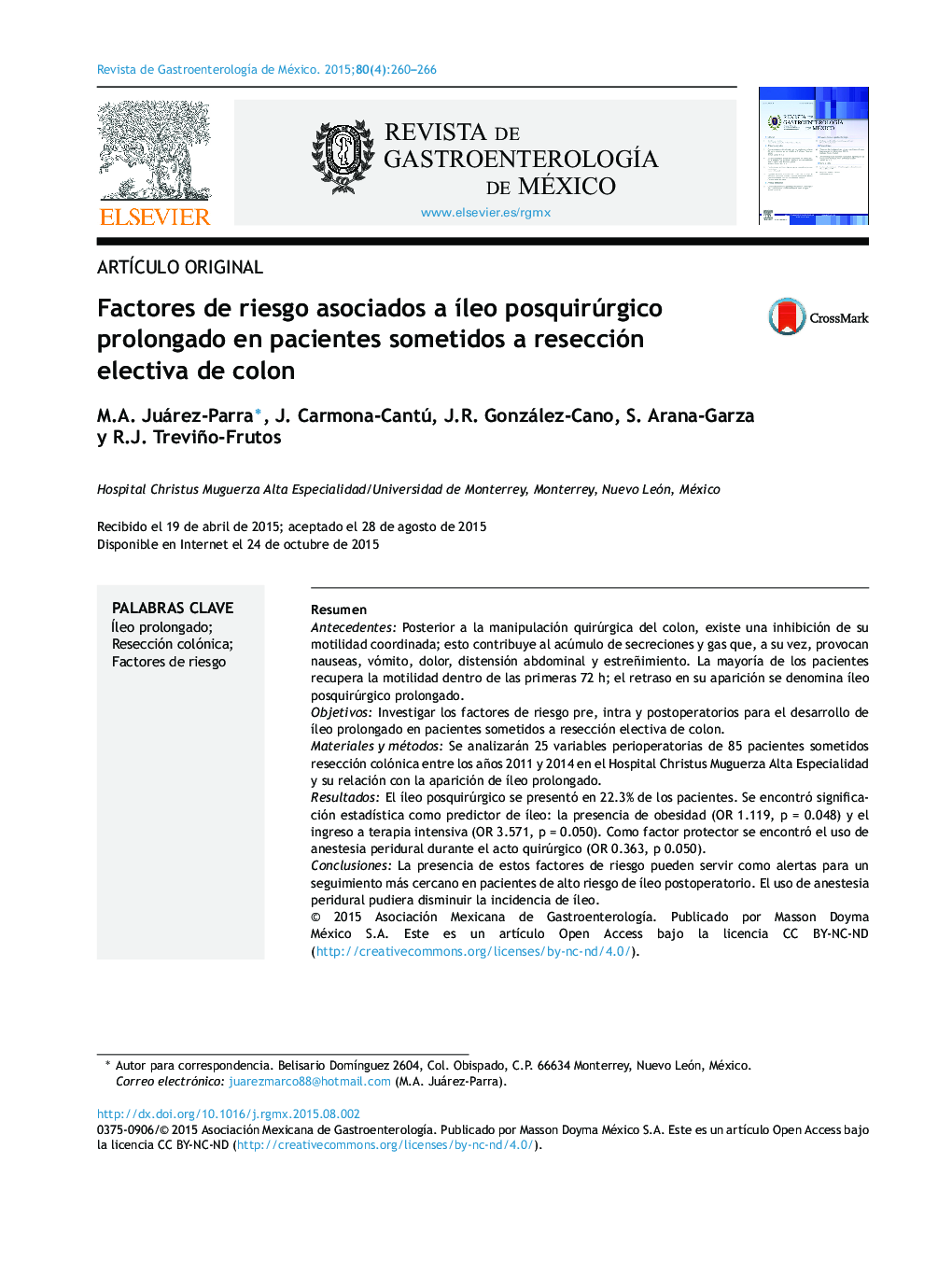| Article ID | Journal | Published Year | Pages | File Type |
|---|---|---|---|---|
| 3318680 | Revista de Gastroenterología de México | 2015 | 7 Pages |
ResumenAntecedentesPosterior a la manipulación quirúrgica del colon, existe una inhibición de su motilidad coordinada; esto contribuye al acúmulo de secreciones y gas que, a su vez, provocan nauseas, vómito, dolor, distensión abdominal y estreñimiento. La mayoría de los pacientes recupera la motilidad dentro de las primeras 72 h; el retraso en su aparición se denomina íleo posquirúrgico prolongado.ObjetivosInvestigar los factores de riesgo pre, intra y postoperatorios para el desarrollo de íleo prolongado en pacientes sometidos a resección electiva de colon.Materiales y métodosSe analizarán 25 variables perioperatorias de 85 pacientes sometidos resección colónica entre los años 2011 y 2014 en el Hospital Christus Muguerza Alta Especialidad y su relación con la aparición de íleo prolongado.ResultadosEl íleo posquirúrgico se presentó en 22.3% de los pacientes. Se encontró significación estadística como predictor de íleo: la presencia de obesidad (OR 1.119, p = 0.048) y el ingreso a terapia intensiva (OR 3.571, p = 0.050). Como factor protector se encontró el uso de anestesia peridural durante el acto quirúrgico (OR 0.363, p 0.050).ConclusionesLa presencia de estos factores de riesgo pueden servir como alertas para un seguimiento más cercano en pacientes de alto riesgo de íleo postoperatorio. El uso de anestesia peridural pudiera disminuir la incidencia de íleo.
BackgroundThere is an inhibition of the coordinated motility of the colon after its surgical manipulation that contributes to the accumulation of fluids and gas, in turn characterized by nausea, vomiting, pain, abdominal distension, and constipation. Motility is recovered in the majority of patients within the first 72 hours. A delay in its resolution is known as prolonged postoperative ileus.AimsTo study the preoperative, intraoperative, and postoperative risk factors for developing prolonged ileus in patients that underwent elective colon resection.Materials and methodsThe association between 25 perioperative variables and the presentation of prolonged ileus was analyzed in 85 patients that underwent colon resection at Hospital Christus Muguerza Alta Especialidad within the time frame of 2011 and 2014.ResultsPostoperative ileus occurred in 22.3% of the patients. The statistically significant predictors of ileus were obesity (OR 1.119, P=.048) and admission to the intensive care unit (OR 3.571, P=.050). The use of peridural anesthesia during the surgical act was found to be a protective factor (OR 0.363, P=.050).ConclusionsThe presence of these risk factors can alert the physician to the need for a closer follow-up in patients at high risk for postoperative ileus, and the use of peridural anesthesia can possibly lower the incidence of ileus.
